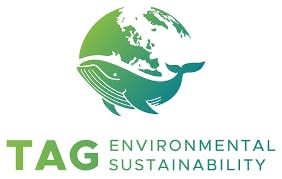This week was my first KubeCon and CloudNativeCon. Here are my top three takeaways, having talked to maintainers from just about every CNCF project that was represented, and members of various Kubernetes SIGs, as well as attended so many talks that I lost count.
1. eBPF is going to have a massive impact

If you haven't heard of it yet, allow me to the be the first to introduce you: https://ebpf.io/. The one-liner is that it opens up the Linux kernel to programmability, meaning that developers are no longer beholden to build on top of whatever Linux has provided; they can instead hook into the kernel and modify functionality. To say that the Linux kernel has been cracked open may sound bonkers, but it's happening, and CNCF projects like Cilium and Falco are making use of it. If you want to learn more about how it was created, a documentary debuted at KubeCon that gives an overview.
2. If you haven't tried WASM, now is the time

I first tried WebAssembly (WASM) in 2018, when it was mainly used in browsers. I thought it was cool, but I didn't have much of a need to dive deeper into it, since I was no longer doing much front-end work. Since then, it has been pushed into the cloud native space, and can now run on the backend thanks to the WebAssembly System Interface (WASI) definition that gave rise to runtimes like Wasmtime. What makes it even more powerful is that WASM modules conform to the Open Container Initiative (OCI) spec (details here), meaning they can be stored in a container registry, and run wherever a container can run, with the right runtime support. The benefit? A much smaller executable with a much faster startup speed. Here's one of many WASM-vs-container comparisons you can find on the web.
3. The cloud-native community is all-in on sustainability

The CNCF created its Working Group for Environmental Sustainability last year under the TAG of the same name, and this year they were given prime keynote space on the first day of KubeCon. All week long there were talks and keynotes about how to run more efficient workloads in the cloud, including from major cloud providers like AWS and Azure. With the emergence of Kepler and OpenCost as CNCF sandbox projects, CNCF graduated project KEDA allowing scale-to-zero deployments, and a host of commercial products for monitoring carbon impact of resource usage, dev teams can stay on top of their sustainability goals and cut down on waste. Going back to WASM - is it possible that WebAssembly might help cut down on your carbon footprint? The answer to that question is yes.
Honorable Mention
Here are some other things worth noting:
Platform engineering has never been easier, with open source tools like Backstage and ArgoCD doing a lot of the heavy lifting.
All of the CNCF projects are looking for contributors. And by all, I really mean all. The maintainers are super helpful in getting things set up, so reach out to them on their project Slack channels (usually linked on the project website).
There is indeed still work being done that isn't purely about AI. I know it's hard to believe with virtually all tech headlines focused on nothing else these days. While AI/ML certainly had a presence at KubeCon, there's plenty still happening in all of the other developer domains.
Even as an attendee, KubeCon is exhausting. There are so many talks, so many project booths to visit, so many companies to check out. It's impossible to take it all in. If you plan on going, bring walking shoes, bring a reusable water bottle, and bring snacks. It's very easy to miss a meal.
Be sure to subscribe to the CNCF YouTube channel, where all of the talks from this week will be posted.
